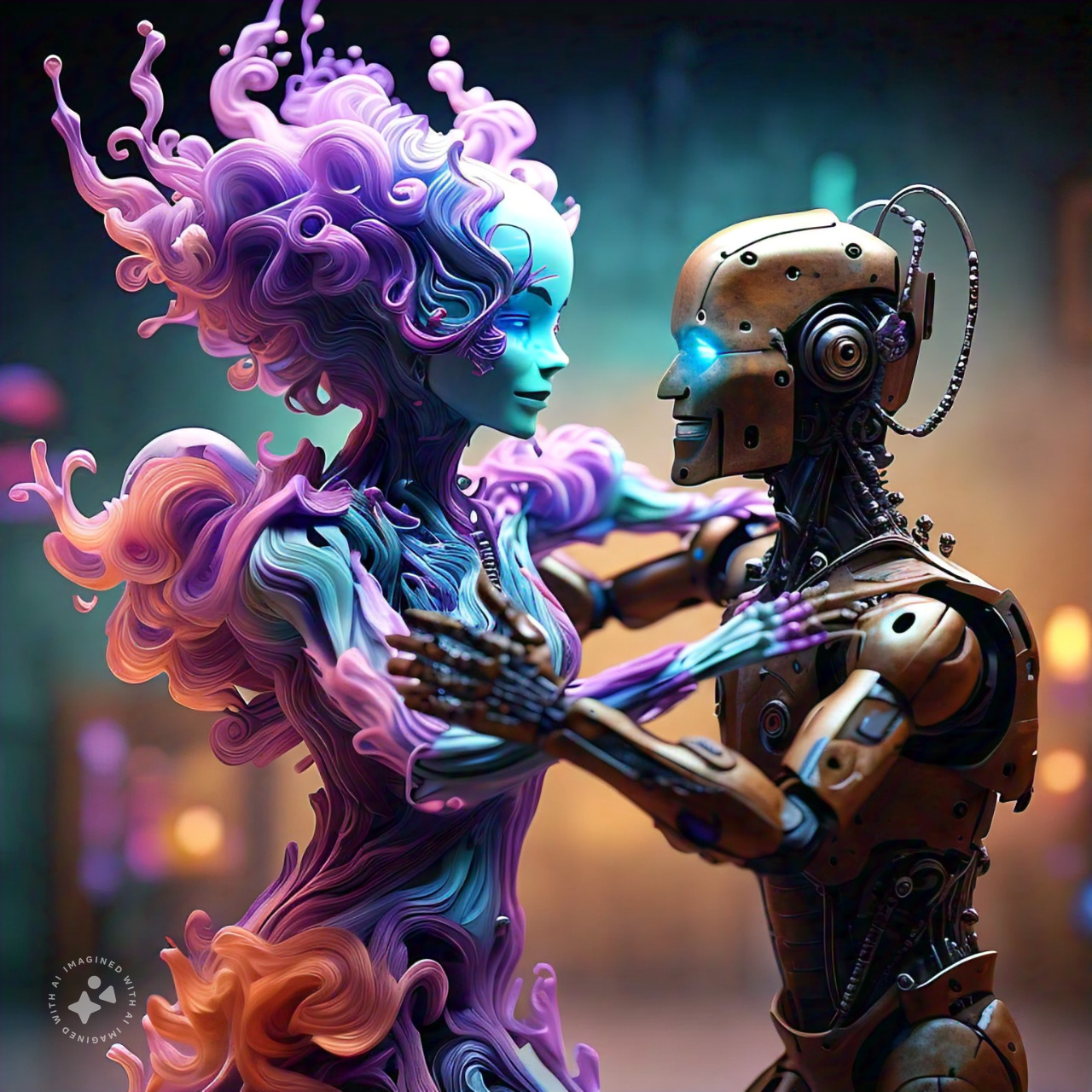I still remember the night it happened. In the depths of sleep, I found myself in a vivid dreamscape, engaged in conversation with my son. The dialogue felt real, meaningful, even profound. As if on cue, a knock echoed through the dream. I opened the door to find Santa Claus standing there, jolly and red-suited. Seeing him, awareness crept in, I began to understand I was in a lucid dream and the Santa before me, was a figment of my own creation. With this realization came another, more startling insight: the “son” I was talking to wasn’t really my son at all. It was a creation of my own mind, a persona crafted by my personal neural network.
Upon waking, I clung to a powerful idea: everything within our dreams is our own creation. Our sleeping minds weave intricate tapestries of thought, emotion, and imagery, populating our nocturnal adventures with characters and scenarios drawn from the depths of our subconscious.
This realization led me to a striking parallel in our waking world. Just as our dreams are manifestations of our individual neural networks, our interactions with artificial intelligence are products of our collective human neural network. When we engage with AI, we’re not conversing with some alien intelligence, but with a reflection of humanity’s accumulated knowledge and creativity.
This connection between dream conversations and AI chats has profound implications for how we understand and interact with both. Let me take you on a journey through the neural pathways of dreams and algorithms, exploring the surprising similarities between these two realms of cognitive exploration.
The Neural Network: From Neurons to Nodes
At the heart of both experiences lies the concept of the neural network. In my brain, like every other, there exists a vast web of interconnected neurons, firing in complex patterns to generate thoughts, memories, and yes, dreams of my son and Santa Claus. In AI, it’s a mathematical model inspired by this biological structure, with artificial “neurons” processing and transmitting information.
Dr. Stephen LaBerge, a prominent dream researcher, once said, “Dreams are a communication from the self to the self.” In my lucid dream, this communication was literal – I was talking to aspects of myself embodied in dream figures. Similarly, I’ve come to see AI conversations as a communication from humanity’s collective knowledge to the individual. Both neural networks – biological and artificial – serve as conduits for this exchange of information and ideas.
The Unpredictable Dance of Neurons and Algorithms
One of the most captivating aspects of my lucid dream was its unpredictability. Even aware that I was dreaming, I couldn’t fully control or predict what my dream figures would say or do. This emergent behavior stems from the complex interplay of neurons and memories in our sleeping brain.
I’ve noticed a similar phenomenon in my interactions with AI language models. Trained on vast datasets of human knowledge, they can generate responses that feel surprisingly original and insightful. The neural network’s ability to combine information in novel ways mirrors our own brain’s capacity for creative problem-solving during sleep.
Mining for Meaning: Dreams and Datasets
Psychologists like Carl Jung have long emphasized the importance of dream interpretation as a tool for self-understanding. My lucid dream experience certainly provided valuable insights into my subconscious mind, helping me process emotions and experiences related to my son and childhood beliefs.
In a parallel fashion, I’ve found that conversations with AI can serve as a mirror, reflecting our thoughts and beliefs back to us in new and illuminating ways. By engaging with these artificial intelligences, we’re essentially probing a vast dataset of human knowledge and experience, much like how dream analysis allows us to explore the depths of our personal and collective unconscious.
The Co-Creation of Consciousness
Perhaps the most profound similarity between my dream conversations and AI chats lies in their interactive nature. In both cases, I’m not a passive recipient of information, but an active co-creator of the experience.
In my lucid dream, I was aware of my role in shaping the dream environment. Similarly, I’ve found that my interactions with AI are a dance of prompts and responses, with each input shaping the direction and content of the conversation.
This co-creative aspect highlights a fundamental truth about both dreams and AI: they are tools for exploration, not oracles of absolute truth. The meaning and value we derive from these interactions come as much from our own engagement and interpretation as from the content itself.
Embracing the Digital Dreamscape
My lucid dream experience opened my eyes to the profound meaning we can find in our nighttime reveries. Now, I see the world of AI conversation as a new frontier of exploration, offering similar potential for insight and self-discovery.
For those who, like me, find meaning in their dreams, I encourage you to approach these digital dialogues with the same open-mindedness and curiosity you bring to your nighttime adventures. By doing so, we open ourselves to a new realm of cognitive exploration, one where the boundaries between human and artificial intelligence blur, and new forms of understanding emerge.
As we stand on the brink of this new era, one thing becomes clear to me: whether we’re navigating the neural pathways of our dreams or the algorithms of AI, the potential for discovery and growth is limited only by our willingness to engage, question, and imagine. In both the world of dreams and the realm of artificial intelligence, the most profound insights often come not from the answers we receive, but from the questions we dare to ask.
So the next time you find yourself in a thought-provoking exchange with an AI, remember my lucid dream. You’re not just interfacing with a machine. You’re embarking on a journey of exploration, one that parallels our nightly sojourns into the subconscious. In both realms, the destination is the same: a deeper understanding of ourselves and the world around us.
